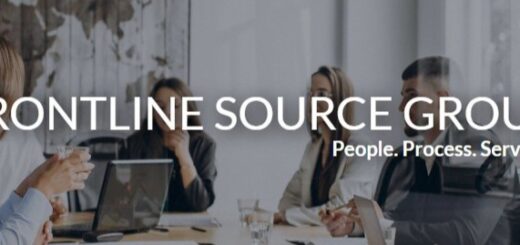CEO’s Breaking the Bottleneck: How to Accelerate Hiring
CEO’s Overcoming Hiring Challenges: A Comprehensive Guide I frequently struggle with the intricacies of hiring in the competitive job market of today. “Hiring bottleneck” describes the delays & barriers that can impede the hiring process, making it challenging for businesses to fill important roles. These bottlenecks can be caused by a number of things, such as an excessive volume of applications, ambiguous job descriptions, or poor hiring team communication. The first step in developing a more successful hiring strategy is acknowledging these difficulties. As I study the hiring bottleneck phenomenon more, I see that it frequently results from a misalignment between the recruitment team’s capabilities and the organization’s needs. Hiring cycles can be drawn out & miscommunications can occur when hiring managers and HR specialists are not in agreement. We are currently hiring for various positions in our company.
CEO’s Key Takeaways
- Hiring bottlenecks can occur due to various factors such as lengthy recruitment processes, lack of qualified candidates, or internal bureaucracy.
- Identifying critical hiring needs involves assessing current and future business goals, understanding the skills and expertise required, and prioritizing key positions.
- Streamlining the recruitment process can be achieved by simplifying job descriptions, optimizing the application process, and implementing efficient candidate screening methods.
- Leveraging technology for efficient hiring includes using applicant tracking systems, AI-powered recruitment tools, and video interviewing platforms to streamline and automate various stages of the hiring process.
- Cultivating a strong employer brand involves showcasing company culture, values, and employee experiences to attract top talent and create a positive reputation in the job market.
Also, outside variables like changes in industry demands and economic fluctuations can make these problems worse, so it’s critical that I remain knowledgeable and flexible in my hiring practices. I must first determine my organization’s most important hiring needs in order to properly address hiring bottlenecks. This entails a careful examination of both future corporate objectives and the capabilities of the workforce today. I can better allocate resources and prioritize my recruitment efforts by determining which roles are critical to fostering innovation and growth. As they can offer insightful information about the abilities and proficiencies needed for success in their fields, department heads & team leaders should be consulted throughout this process.
Also, I’ve discovered that it’s critical to comprehend the subtleties of every role. Finding applicants who share the company’s values & have the potential to succeed in the long run is more important than simply filling openings. By creating a precise profile for every role, I can expedite my search and make sure I’m focusing on people who will help the company achieve its goals.
Streamlining the hiring process itself is the next step after determining the most important hiring requirements. From job posting to onboarding, every step of the hiring process is assessed in order to pinpoint areas that require improvement. Simplifying the application process, in my experience, can greatly improve the candidate experience and raise the possibility of luring top talent.
Reduced steps in the application process, for example, can keep prospective applicants from quitting out of frustration. Also, I understand how crucial it is to set precise deadlines for every stage of the hiring process. I can instill a sense of urgency that motivates everyone to act quickly by establishing due dates for resume reviews, interviews, and final decisions. My team & I stay accountable & committed to our hiring objectives when we check in on a regular basis.
In my pursuit of increasing hiring effectiveness, I have come to appreciate the revolutionary potential of technology. Applicant tracking systems, or ATS, are now indispensable resources for hiring teams to manage applications and streamline communication. I can devote more time to strategic recruitment by automating time-consuming processes like interview scheduling & resume screening. In addition, using data analytics gives me a better understanding of the preferences and behavior of candidates.
I can decide where to put resources and how to improve my hiring practices by looking at metrics like application conversion rates and time-to-hire. Using technology improves productivity and gives me the ability to give applicants a more interesting experience, which eventually results in better hires. Attracting top talent in today’s labor market requires a strong employer brand. It has become clear to me that applicants are searching for an organization that shares their values and goals, not just a job.
Using a variety of platforms, including social media, career websites, and job fairs, I concentrate on presenting our company culture, mission, and employee testimonials in order to develop an engaging employer brand. Transparency in our hiring process is another thing I value highly. I can establish confidence and promote a favorable perception of our company by giving candidates clear information about what to anticipate during interviews & tests. In addition to drawing in top talent, a strong employer brand increases employee retention by giving current team members a feeling of pride and community. laying a solid foundation.
Frequent workshops and training sessions can fill in any knowledge gaps & give hiring managers & HR the tools they need to successfully handle the challenges of hiring. encouraging candid communication. Also, real-time feedback on applicants and recruitment tactics is made possible by encouraging open communication between HR and hiring managers. I can make sure that we are all working toward the same objective—locating the best talent for our company—by promoting a collaborative culture.
improving the hiring procedure. In addition to improving the hiring process, this empowerment makes the workforce more engaged in general. I understand how important it is to use data-driven hiring practices in an era where data influences decisions in many different industries. I can monitor recruiting-related key performance indicators (KPIs) like retention rates, diversity metrics, and candidate quality by utilizing analytics tools.
With the help of this data, I can spot patterns & modify our hiring procedures accordingly. In the event that I observe that some sourcing channels produce better candidates than others, for example, I can direct more resources toward those channels in subsequent hiring initiatives. Also, reviewing applicant feedback can reveal important details about how to enhance the hiring procedure. I can improve our hiring practices & eventually help create a more robust workforce by implementing a data-driven approach. Retaining top talent is just as crucial to the long-term success of an organization as attracting them.
I now know that the onboarding procedure is where employee retention starts. I can aid in new hires’ more efficient transition into their positions by offering them thorough training and assistance. Long-term engagement and satisfaction are facilitated by this initial investment in their development.
Retaining talent also depends on creating a positive workplace culture. Recognition of accomplishments, chances for professional growth, and frequent check-ins with staff members all support a feeling of motivation and belonging within the company. By putting employee development and well-being first, I can foster an atmosphere where top talent feels appreciated & encouraged to put forth their best effort. To sum up, managing the challenges of hiring calls for a multidimensional strategy that includes recognizing critical needs, identifying bottlenecks, optimizing procedures, utilizing technology, building an employer brand, empowering teams, putting data-driven strategies into practice, and concentrating on retention. Using these guidelines will help me improve my company’s hiring practices and create a workforce that propels success in a constantly changing environment.
In a related article from Frontline Source Group’s CEO Blog, Bill Kasko discusses the hot opportunity in the DFW area for customer service representatives with plumbing knowledge. This article highlights the importance of finding candidates with specific skills and knowledge to meet the needs of a niche market. To read more about this unique hiring opportunity, check out the article here.
FAQs
What is the bottleneck in hiring?
The bottleneck in hiring refers to the slow or inefficient process of bringing new employees into a company, which can hinder the company’s growth and success.
Why is critical hiring important for CEOs?
Critical hiring is important for CEOs because the success of a company depends on having the right talent in key positions. Hiring the right people can accelerate growth and innovation, while hiring the wrong people can lead to setbacks and inefficiencies.
How can smart CEOs accelerate critical hiring?
Smart CEOs can accelerate critical hiring by streamlining the hiring process, leveraging technology for recruitment, building a strong employer brand, and investing in talent acquisition strategies.
What are the consequences of a slow hiring process?
A slow hiring process can result in missed opportunities, increased workloads for existing employees, decreased morale, and potential loss of top talent to competitors.
What role does talent acquisition play in critical hiring?
Talent acquisition is the process of identifying, attracting, and hiring the right talent for key positions within a company. It plays a crucial role in critical hiring by ensuring that the company has the right people in place to drive success and growth.




